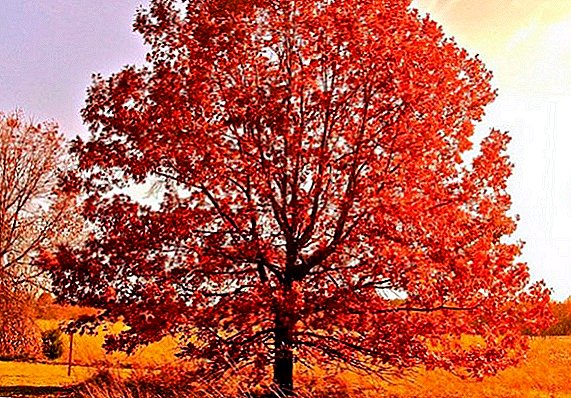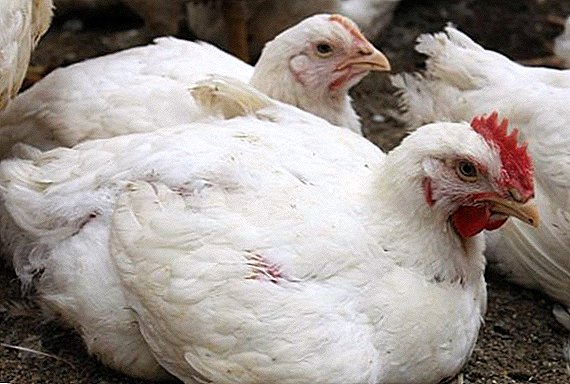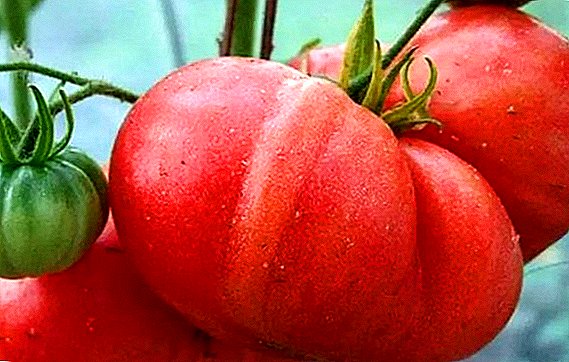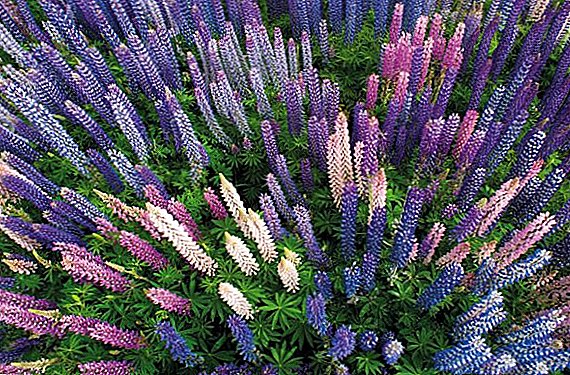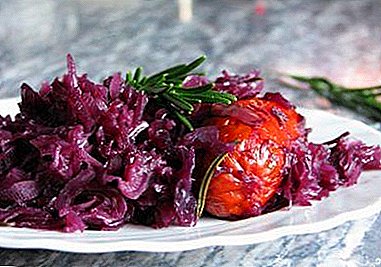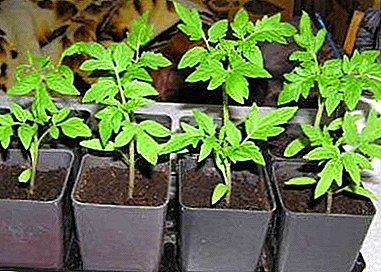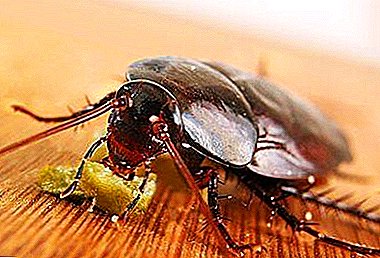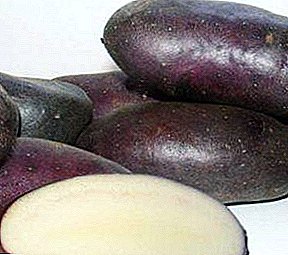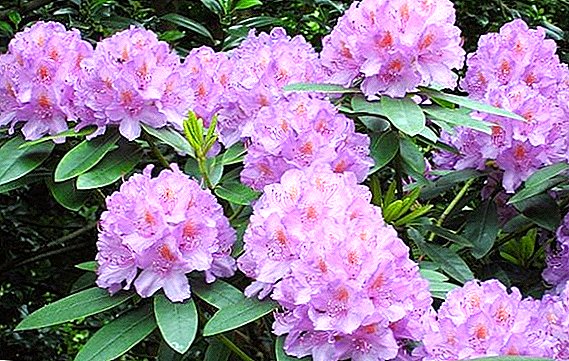 Rhododendron is not the most common plant among summer residents of our country, especially its northern regions. And the reason for this is that despite its beauty and attractiveness, it is considered a rather capricious shrub that requires constant attention and special care, besides, it is a heat-loving plant, and refuses to grow in cold areas. Is it so? In our article we will understand: how does the cultivation of rhododendron differ from other colors; find out whether it is possible to grow this bush in a cold region, for example, in Siberia; and find out all the details of planting and caring for this plant from photos and reviews of experienced gardeners.
Rhododendron is not the most common plant among summer residents of our country, especially its northern regions. And the reason for this is that despite its beauty and attractiveness, it is considered a rather capricious shrub that requires constant attention and special care, besides, it is a heat-loving plant, and refuses to grow in cold areas. Is it so? In our article we will understand: how does the cultivation of rhododendron differ from other colors; find out whether it is possible to grow this bush in a cold region, for example, in Siberia; and find out all the details of planting and caring for this plant from photos and reviews of experienced gardeners.
Botanical description
Rhododendron is a shrub (sometimes a tree) of the Heather family. There are about 600 species of this plant. Because of this diversity, it becomes difficult to form one botanical description common to all types, which would correspond to all representatives. The leaves of this shrub differ in their appearance and size depending on the variety, most often they have a dark green color, a rare prolapse and an oval, ovoid shape. They can be both one-and two-year, and long-term.
Check out the most popular winter hardy rhododendron varieties.Flowers - the main advantage of these bushes - can be colored from delicate pale pink to rich bright red and purple. Often they have the form of bells and are collected in large inflorescences. Happen both sexes.
Multi-seeded five-leaf boxes carry the function of the fruits of these shrubs. Inside they are seeds from 0.5 mm to 2 mm in length. These bushes can grow individually or in groups. Grow slowly, multiply by seeds, cuttings, division or branches. 
Winter-hardy species and varieties
The secret to the successful cultivation of rhododendron lies in the choice of frost-resistant hybrids and varieties.
Did you know? There are rhododendron species that can reach 30 meters in height and live to 100 years.They are much less demanding and provide much easier care even for plants planted in Siberia. Winter-hardy varieties include:
- Daurian rhododendron. This variety is especially frost-resistant and can "withstand" temperatures down to -34 ° C. It grows 1 meter in height. It has rigid oblong leaves and blooms twice a year: in early spring, before the appearance of foliage in August-September. Flowers form large, white, pink or purple. With the onset of cold weather completely drops the leaves.

- Rhododendron Ledebour. This bush can reach from 0.5 to 1.8 meters in height. Its distinguishing feature is the ability to maintain leaves even in winter. This variety blooms inflorescences lilac in the interval between April and May.

- Rhododendron Schlippenbach. This frost-resistant variety belongs to deciduous species. It blooms in May with beautiful, large, inflorescences of a soft pink color. The bush itself grows up to 1-1.2 meters, it has elongated leaves of dark green color, which in autumn acquire rich red and crimson hues.

Did you know? The ancient Greek peoples produced honey from rhododendron pollen, which had laxative as well as hallucinogenic effects. In those days, such honey was very popular.
Features of growing
Now let's find out what are the features when growing rhododendrons in a garden in Siberia.
Climatic conditions
When choosing a variety for cultivation, you should always take into account the climate of your area - it should correspond to the usual conditions of natural germination of a plant as much as possible.
The sharply continental climate of the middle zone of Siberia is well suited for growing the above-listed cold-resistant rhododendron varieties, although this plant is considered more heat-loving. 
Soil type
Rhododendron bushes love to grow in loose soil with high acidity. To give the soil the desired composition, add peat mixed with sand, fractional pine bark and pine needles.
In order to prevent the roots of shrubs from rotting in marshy ground, drainage at the bottom of the planting holes, a layer of 20 centimeters, will be a prerequisite.
Important! Planting in the fall is not desirable, since the plant will not have enough time to take root, adapt and calmly meet the winter frosts. There is a big risk that the bush will not take root and die.
Planting rhododendron in Siberia
The process of growing rhododendron, caring for it and reproduction of this bush in the conditions of the climate of Siberia require some nuances that we will now consider.
Timing
For planting the above cold-resistant varieties are perfect spring. It is in spring that all the systems of this plant are activated, which will allow him to transfer this process without serious consequences and to take root thoroughly in a new place. If your bush has closed roots, it can be planted later.
Like rhododendron, the heather family includes heather, azalea, wild rosemary, strawberry tree, Erica.
Rules for choosing seedlings
When choosing the right planting material should consider the following factors:
- External signs of health. This refers to the green color of the leaves, without brown and yellow patches and spots, as well as the strength and elasticity of the branches and shoots of the bush.
- The small size of the bush. It is better if it is in a state of flowering.
- The presence of a pot. It is better to buy rhododendron with a protected root system. If thin roots of a bush stick out from the back of the pot, it means that it grew in this particular flowerpot and did not undergo transplants before being sold.
- The number of leaves. They should grow thickly, covering almost the entire surface of the branches, forming a lush crown. Rare foliage suggests that the green falls, and therefore the plant is weak.

Scheme and technology
Rhododendron is best planted in a semi-shaded area, protected from direct sunlight and strong winds. A landing hole is dug about half a meter deep and up to 70 cm wide.
Important! Mulching should be done with great care so as not to fall asleep at the branching point of the bush. This can cause decay and death of the plant.Do not forget that in order to avoid rotting, seedlings should not be deeply deepened into the ground, since the plant has a superficial root system. Immediately after planting, the bushes need to be poured with water and mulch.
Conifer needles or shredded pine bark are best for this. This technique will work as an obstacle to the evaporation of vital moisture, protect the roots from overheating in the summer and from the cold in winter, and also support the desired level of acidity in the soil. 
Care rules
After proper planting of healthy rhododendron saplings in Siberia for their healthy growth is not so much.
Watering
Rhododendrons are rather moisture-loving plants and especially need abundant watering during flowering and budding. And of course, you need to pay great attention to watering and spraying the bushes during heat and drought.
Top dressing
The first few years after planting, rhododendrons do not need additional fertilizer. As a top dressing with the onset of the growing season, you can acidify the soil with a weak solution of citric or oxalic acid.  For adult plants, to increase the abundance of flowering, you can use ammonium nitrate, urea, superphosphate, potassium sulphate in low concentrations. Feeding is usually carried out several times per season: the first time in March and the last in the middle of summer.
For adult plants, to increase the abundance of flowering, you can use ammonium nitrate, urea, superphosphate, potassium sulphate in low concentrations. Feeding is usually carried out several times per season: the first time in March and the last in the middle of summer.
Important! It is not recommended to use fertilizers containing chlorine and lime, as well as horse, pork or poultry manure as fertilizer for Rhododendron, as they violate the acidity of the soil.
Soil care
The land under the bushes is usually not loosened and not dug up. It is sufficiently abundant to be watered, mulched for at least 5 cm and fed from time to time so that your plants will enjoy your health and abundant flowering.
Pruning
Pruning, if necessary, spend the most minimal, preventive. To do this, choose the beginning of spring, that is, the month of March. In general, with the formation of the shape of the bush and pruning "extra" branches from rhododendron, it is better not to abuse it. 
Wintering rules
If Siberia is the place where your rhododendron bushes grow, it would be advisable to find out how to protect them from the cold in winter. For frost-resistant varieties (namely, we recommend them to be planted in this area) there is no need for this plant to hold special events for the winter.
Is that you can cover the fallen leaves basal neck. This will be enough for the plant not to freeze and die in the cold period.  After reading the article and learning about all the features of rhododendron cultivation in Siberia, it becomes clear that there is nothing difficult and, even more, impossible - the main thing is to choose the right frost-resistant variety and you will become the owner of a magnificent lush shrub with large, bright, fragrant flowers.
After reading the article and learning about all the features of rhododendron cultivation in Siberia, it becomes clear that there is nothing difficult and, even more, impossible - the main thing is to choose the right frost-resistant variety and you will become the owner of a magnificent lush shrub with large, bright, fragrant flowers.


